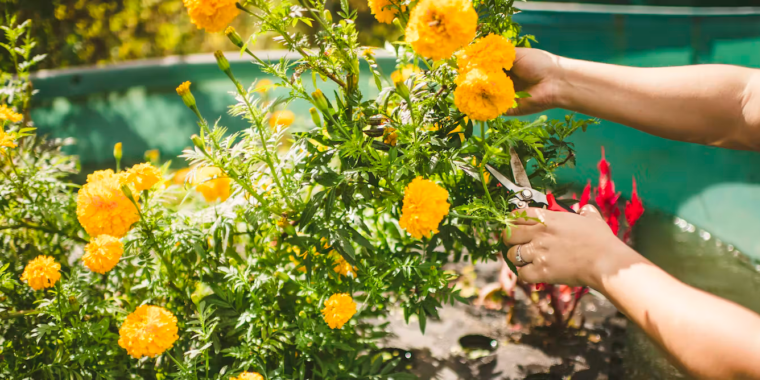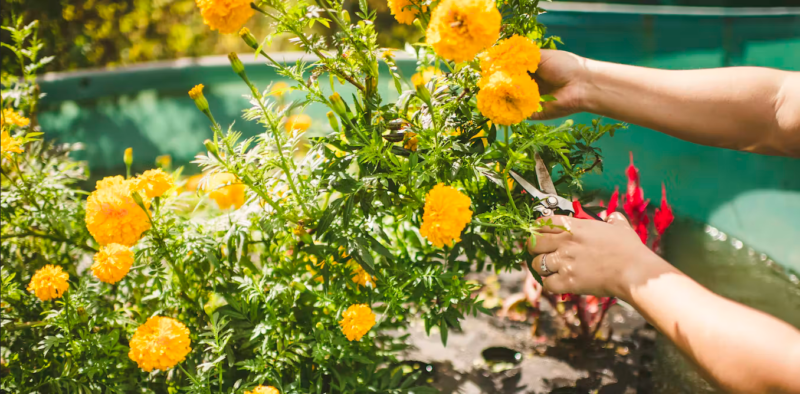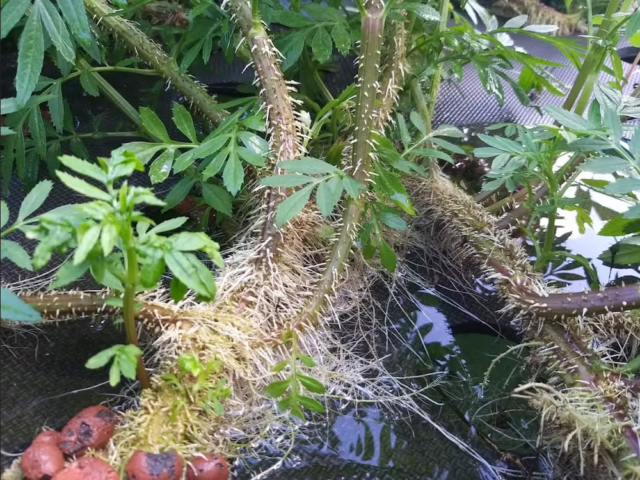Flowers grown floating on polluted waterways can help clean up nutrient runoff

here’s hoping it also masks the runoff smell —
Cut-flower farms could be a sustainable option for mitigating water pollution.
Jazmin Locke-Rodriguez and Krishnaswamy Jayachandran, The Conversation
–

Enlarge / The cut flowers could pay for themselves and even turn a profit.
Flowers grown on inexpensive floating platforms can help clean polluted waterways, over 12 weeks extracting 52 percent more phosphorus and 36 percent more nitrogen than the natural nitrogen cycle removes from untreated water, according to our new research. In addition to filtering water, the cut flowers can generate income via the multibillion-dollar floral market.
In our trials of various flowers, giant marigolds stood out as the most successful, producing long, marketable stems and large blooms. Their yield matched typical flower farm production.
Why it matters
Water pollution is caused in large part by runoff from farms, urban lawns, and even septic tanks. When it rains, excess phosphorus, nitrogen, and other chemicals wash into lakes and rivers.
These nutrients feed algae, leading to widespread and harmful algae blooms, which can severely lower oxygen in water, creating “dead zones” where aquatic life cannot survive. Nutrient runoff is a critical issue as urban areas expand, affecting the health of water ecosystems.
Water pollution is an escalating crisis in our area of Miami-Dade and Broward counties in Florida. The 2020 Biscayne Bay fish kill, the largest mass death of aquatic life on record for the region, serves as a stark reminder of this growing environmental issue.
How we do our work
We study sustainable agriculture and water pollution in South Florida.
Inspired by traditional floating farm practices, including the Aztecs’ chinampas in Mexico and the Miccosukees’ tree island settlements in Florida, we tested the idea of growing cut flowers on floating rafts as a way to remove excess nutrients from waterways. Our hope was not only that the flowers would pay for themselves, but that they could provide jobs here in Miami, the center of the US cut-flower trade.

Enlarge / Chemical conditions in the test tanks were the same as in nearby polluted waterways.
We floated 4-by-6-foot (1.2-by-1.8-meter) mats of inexpensive polyethylene foam called Beemats in 620-gallon (2,300-liter) outdoor test tanks that mirrored water conditions of nearby polluted waterways. Into the mats, we transplanted flower seedlings, including zinnias, sunflowers, and giant marigolds. The polluted tank water was rich in nutrients, eliminating the need for any fertilizer. As the seedlings matured into plants over 12 weeks, we tracked the tanks’ improving water quality.
Encouraged by the success of the marigolds in our tanks, we moved our trials to the nearby canals of Coral Gables and Little River. We anchored the floating platforms with 50-pound (22.7-kilogram) weights and also tied them to shore for extra stability. No alterations to the landscape were needed, making the process simple and doable.

Enlarge / Some plants grow roots in places–such as the stem–other than where their original roots began.
What still isn’t known
The success of the giant marigolds might be linked to the extra roots that grow from their stems known as adventitious roots. These roots likely help keep the plants stable on the floating platforms. Identifying additional plants with roots like these could help broaden plant choices.
Future raft designs may also need modifications to ensure better stability and growth for other cut-flower and crop species.
What’s next
Our promising findings show floating cut-flower farms could be a sustainable option for mitigating water pollution.
One of us (Locke-Rodriguez) is expanding this research and working to scale up floating farms in South Florida as a demonstration of what could take place in the many locations facing similar issues worldwide.
The Research Brief is a short take on interesting academic work.![]()
Jazmin Locke-Rodriguez, Post Doctoral Associate in the Institute of Environment, Florida International University, and Krishnaswamy Jayachandran, Professor of Agroecology, Florida International University.
This article is republished from The Conversation under a Creative Commons license. Read the original article.


